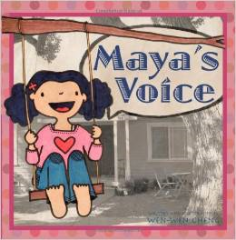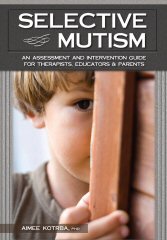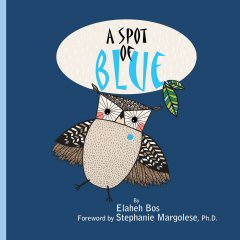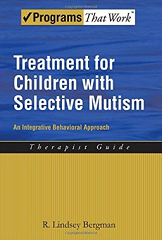The Selective Mutism Treatment Guide: Manuals for Parents, Teachers, and Therapists: Still Waters Run Deep
$19.95
by Ruth Perednik
The Selective Mutism Treatment Guide: Manuals for Parents, Teachers, and Therapists, is an innovative, effective approach to the treatment of selective mutism, which is based both on rich clinical experience spanning two decades, and on theoretical knowledge of how selective mutism is generally viewed and treated today. It includes separate manuals written for parents, school or kindergarten staff, and therapists, each with concrete, effective, tried and tested ways of helping the child with selective mutism. It is designed to be a positive and empowering experience for the child and his family. This guide is aimed for professionals and lay people alike: For parents and relatives of children with SM it offers a valuable resource to understand the condition, with programs and tools to help the child at home and at school in order to improve his verbal and social communication. For mental health and school based professionals it provides a guide which enables the reader to understand and treat the disorder, working closely with the school and the parents.
The Parents’ Manual includes sections about how SM can affect your child and family, how to speak to your child about SM, how to treat SM, how to lower your child’s anxiety, and how to work together with the school or kindergarten to help your child. It outlines effective interventions that parents can carry out at home and in school to help their child overcome SM and attain improved social communication skills.
The Teacher’s Manual includes: a description of SM and its possible causes, understanding the child with SM, how SM presents in school, an overview of how to treat SM, and a variety of interventions and programs for teachers to implement in school.
The Therapist’s Manual includes sections on the definition and causes of SM, methods of assessment, levels of SM, planning therapy, cognitive-behavioral techniques for older children and teenagers, and detailed, step by step descriptions of the stages of therapy, including initial home-based therapy followed by school based sessions.
This behavioral therapy program aims to enable the child to move as seamlessly as possible between the various frameworks in which he lives – home, school and the outside world – in a harmonious way. The treatment is built upon the child’s optimum functioning, which usually occurs at home. Here he is not hampered by his anxiety and he can express who he really is, which is often at a level of verbal communication and social interaction that may be literally unbelievable to those who see him only in school. The therapy acts as a bridge enabling the child to transfer and generalize his selectively optimum level of functioning to all his daily environments. An underlying principle of this approach is respect and belief in the child’s nature and his home environment – the aim is to build on his and his family’s strengths.
The treatment approach is designed to increase the speed and effectiveness of therapy; the initial home based sessions and the ongoing involvement of the parents and school staff aim to render redundant large sections of therapy that are called for when treatment takes place in a clinic or only in the school.
This book may be used by parents, teachers or therapists individually, or may be part of a comprehensive treatment plan in which the teacher-parent-therapist triumvirate works together, each with their own treatment plans, mutually fine tuning their interventions.








